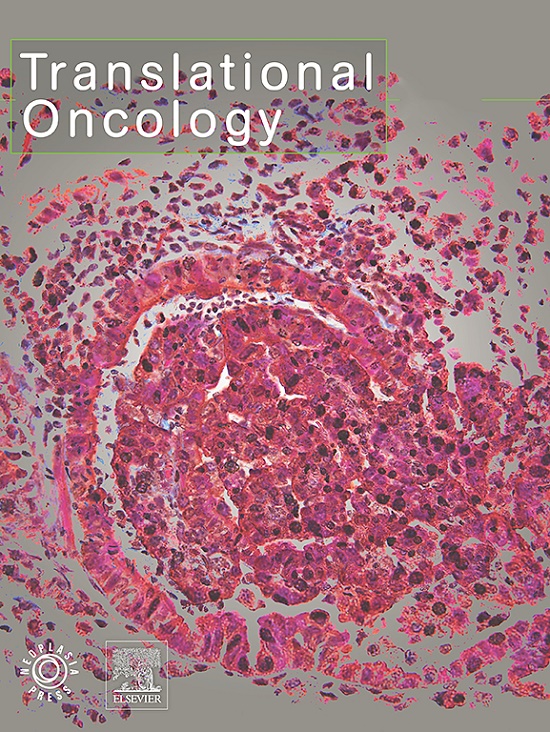Machine learning-derived natural killer cell signature predicts prognosis and therapeutic response in clear cell renal cell carcinoma
IF 5
2区 医学
Q2 Medicine
引用次数: 0
Abstract
Background
Natural killer cells, interconnected with patient prognosis and treatment response, play a pivotal role in the tumor immune microenvironment and may serve as potential novel predictive biomarkers for renal cell carcinoma.
Methods
Clear cell renal cell carcinoma transcriptome data and the corresponding clinical data were obtained from the Cancer Genome Atlas (TCGA) database. Single-cell sequencing data were sourced from the Gene Expression Omnibus (GEO) database. A risk model was established by integrating ten different machine learning algorithms, which resulted in 101 combined models. The model with the highest average C-index was selected for further analysis, and was assessed using nomogram, time-dependent receiver operating characteristics (ROC) and Kaplan–Meier survival analysis. The differences in immune infiltration fractions, clinicopathological features, and response to various targeted therapies and immunotherapy between high- and low-risk groups were investigated. Furthermore, qRT-PCR, IHC, colony formation test, CCK8 assay and flow cytometry were conducted to explore the expression pattern and function of ARHGAP9 in our own patient samples and renal cancer cell lines.
Results
Totally, 156 NK cell-related genes and 5189 prognosis-related genes were identified, and 36 genes of their intersection demonstrated prognostic value. A risk model with 18 genes was established by Coxboost plus plsRcox, which can accurately predict the prognosis of ccRCC patients. Significant correlations were determined between risk score and tumor malignancy and immune cell infiltration. Meanwhile, a combination of tumor mutation burden plus risk score could have higher accuracy of predicting clinical outcomes. Moreover, high-risk group patients were more likely to be responsive to targeted therapy but show no response to immunotherapy.
Conclusions
Intricate signaling interactions between NK cells and various cellular subgroups were depicted and the developmental trajectory of NK cells was elucidated. A NK cells-related risk model was established, which can provide reliable prognostic information and identified patients with more probability of benefiting from therapy.
机器学习衍生的自然杀伤细胞特征可预测透明细胞肾细胞癌的预后和治疗反应。
背景:自然杀伤细胞与患者预后和治疗反应相互关联,在肿瘤免疫微环境中发挥着关键作用,可作为肾细胞癌潜在的新型预测生物标志物:透明细胞肾细胞癌转录组数据和相应的临床数据来自癌症基因组图谱(TCGA)数据库。单细胞测序数据来自基因表达总库(GEO)数据库。通过整合十种不同的机器学习算法建立了一个风险模型,最终形成了 101 个组合模型。选取平均 C 指数最高的模型进行进一步分析,并使用提名图、时间依赖性接收器操作特征(ROC)和 Kaplan-Meier 生存分析进行评估。研究还探讨了高风险组和低风险组在免疫浸润比例、临床病理特征以及对各种靶向疗法和免疫疗法的反应方面的差异。此外,还采用 qRT-PCR、IHC、集落形成试验、CCK8 检测和流式细胞术等方法,探讨 ARHGAP9 在患者样本和肾癌细胞系中的表达模式和功能:结果:共鉴定出 156 个 NK 细胞相关基因和 5189 个预后相关基因,其中 36 个基因的交叉点具有预后价值。通过 Coxboost 加 plsRcox 建立了包含 18 个基因的风险模型,该模型可准确预测 ccRCC 患者的预后。风险评分与肿瘤恶性程度和免疫细胞浸润之间存在显著相关性。同时,肿瘤突变负荷加风险评分的组合能更准确地预测临床预后。此外,高风险组患者更有可能对靶向治疗有反应,但对免疫治疗无反应:结论:该研究描绘了NK细胞与各种细胞亚群之间错综复杂的信号相互作用,并阐明了NK细胞的发育轨迹。建立了一个与 NK 细胞相关的风险模型,该模型可提供可靠的预后信息,并识别出更有可能从治疗中获益的患者。
本文章由计算机程序翻译,如有差异,请以英文原文为准。
求助全文
约1分钟内获得全文
求助全文
来源期刊

Translational Oncology
ONCOLOGY-
CiteScore
8.40
自引率
2.00%
发文量
314
审稿时长
54 days
期刊介绍:
Translational Oncology publishes the results of novel research investigations which bridge the laboratory and clinical settings including risk assessment, cellular and molecular characterization, prevention, detection, diagnosis and treatment of human cancers with the overall goal of improving the clinical care of oncology patients. Translational Oncology will publish laboratory studies of novel therapeutic interventions as well as clinical trials which evaluate new treatment paradigms for cancer. Peer reviewed manuscript types include Original Reports, Reviews and Editorials.
 求助内容:
求助内容: 应助结果提醒方式:
应助结果提醒方式:


